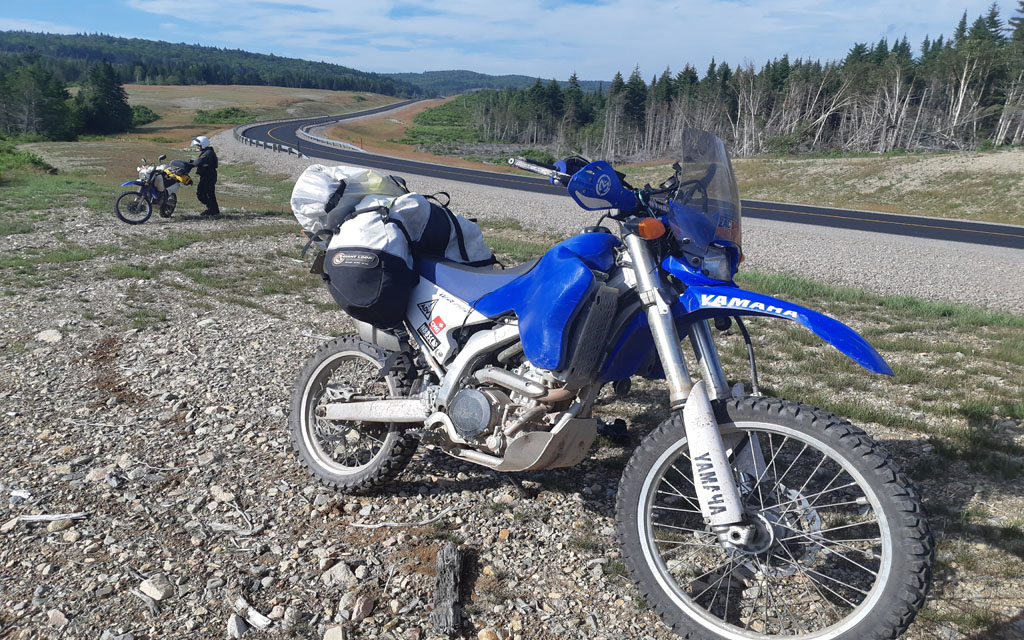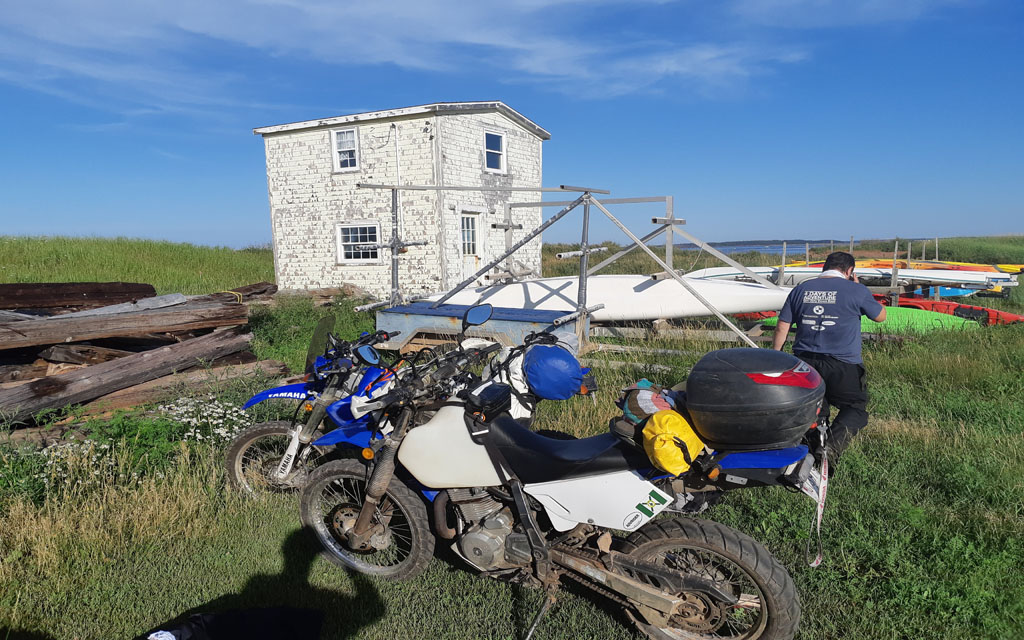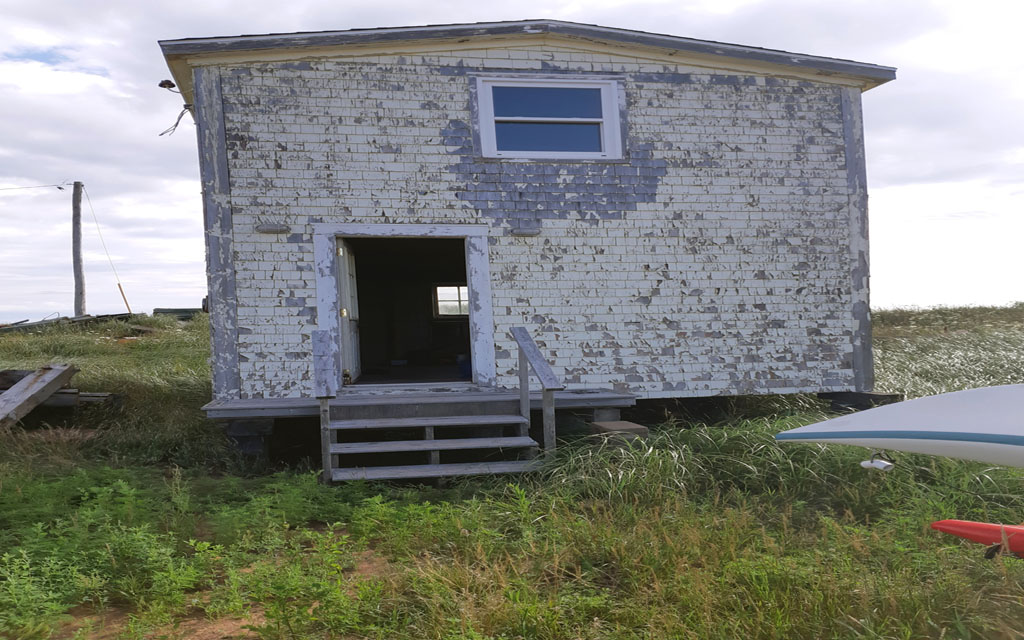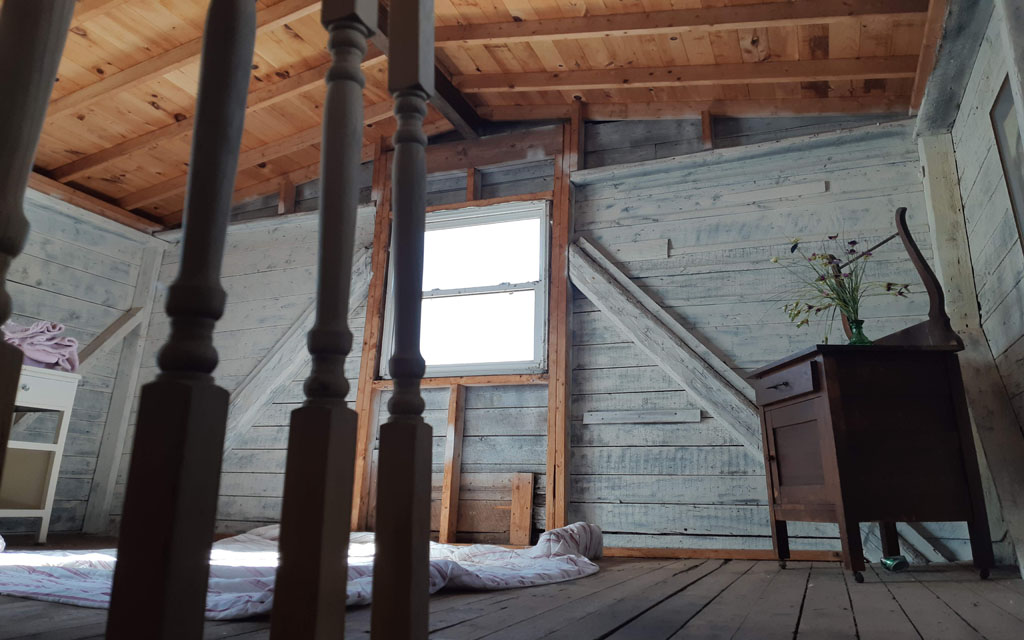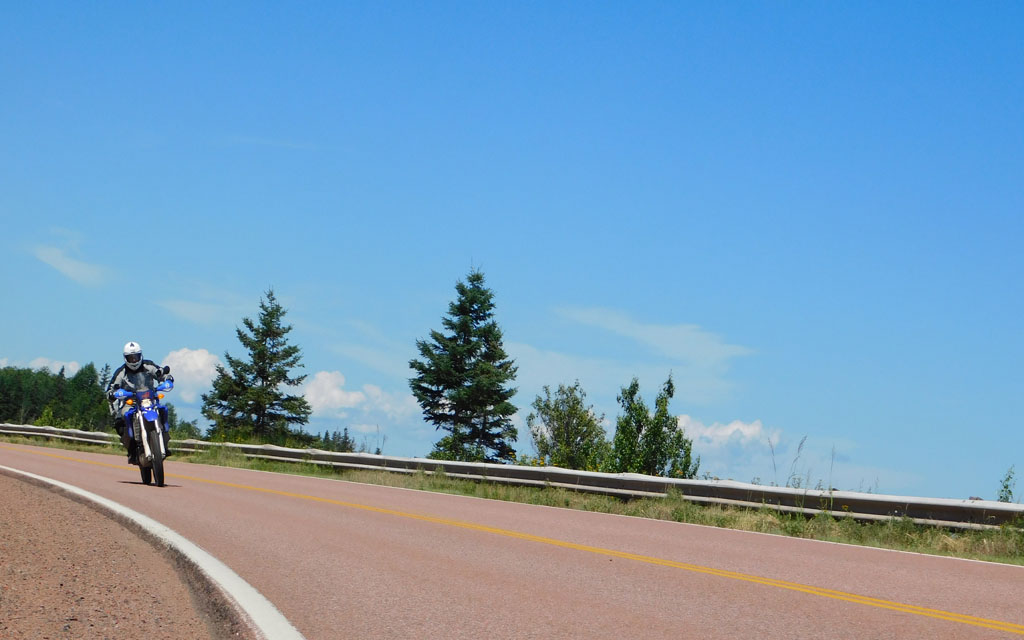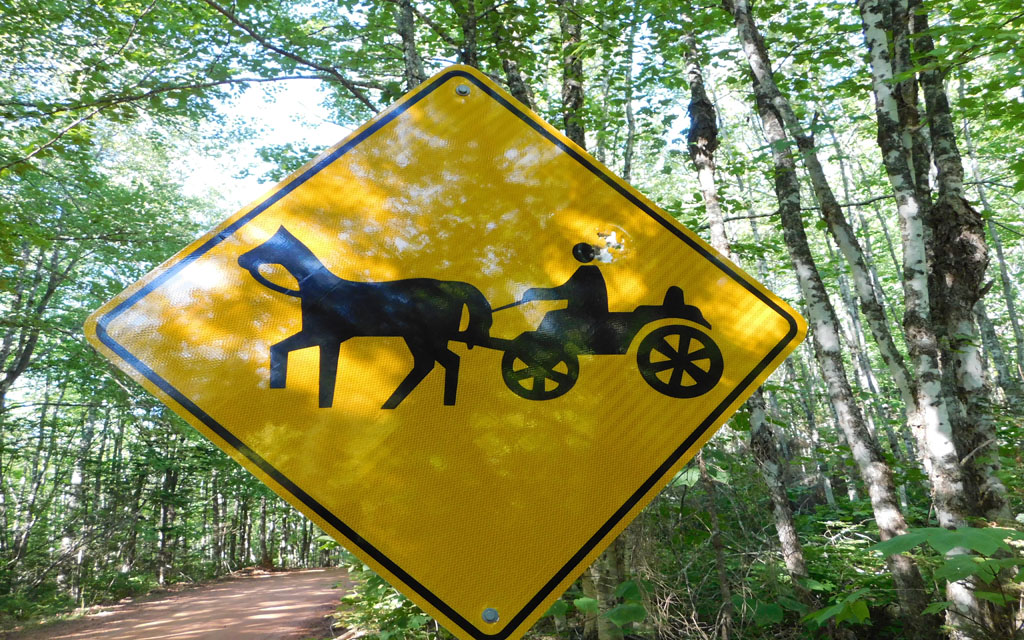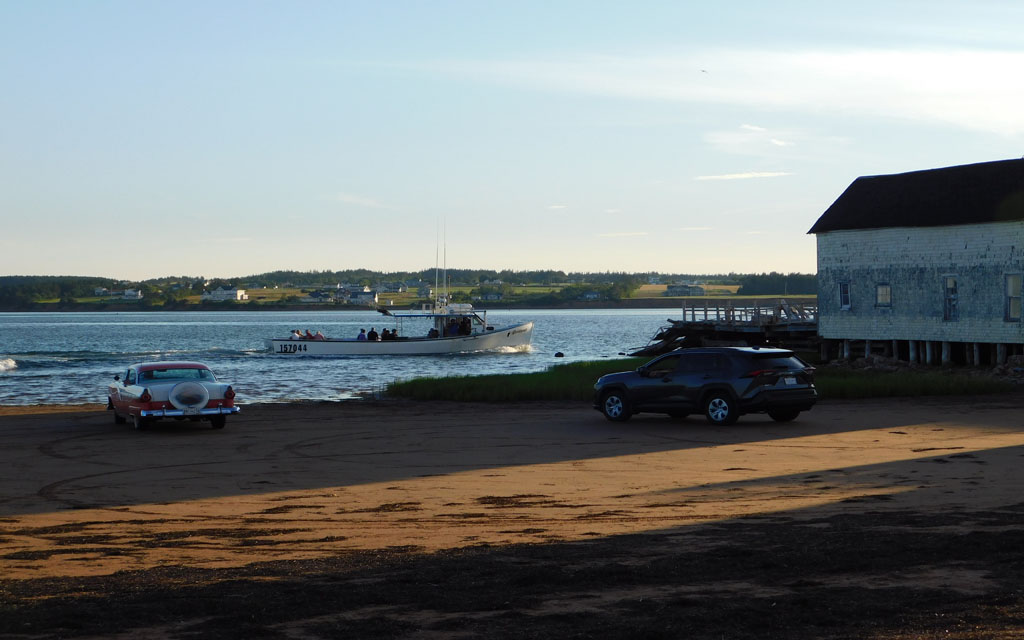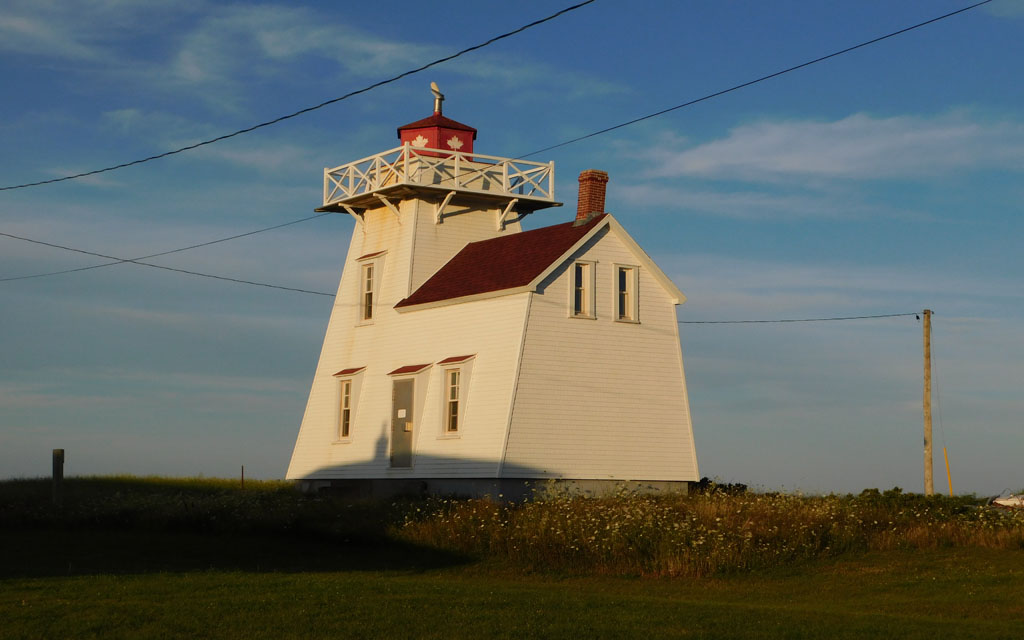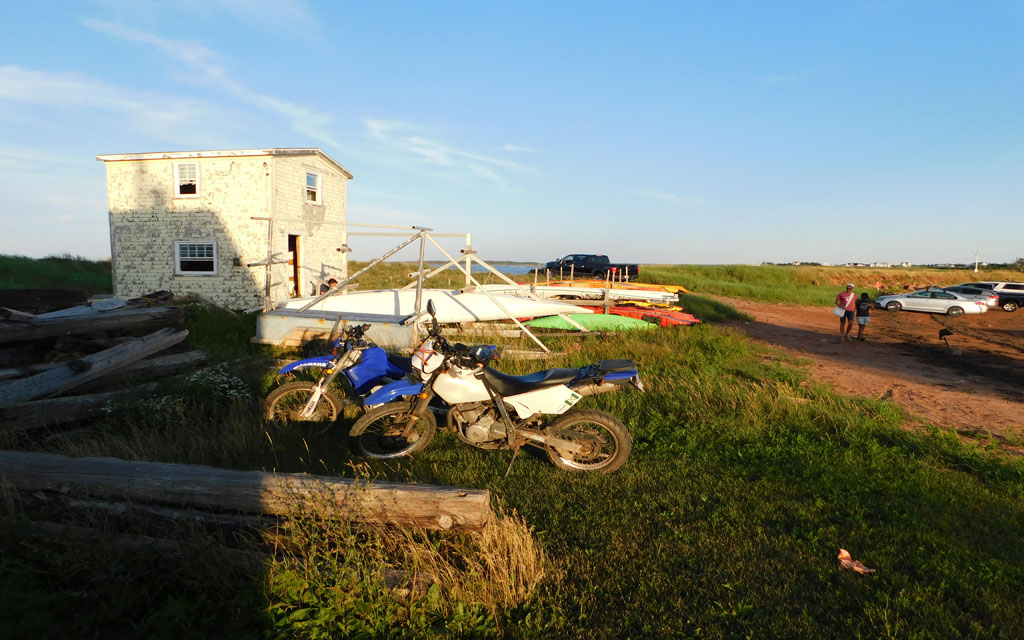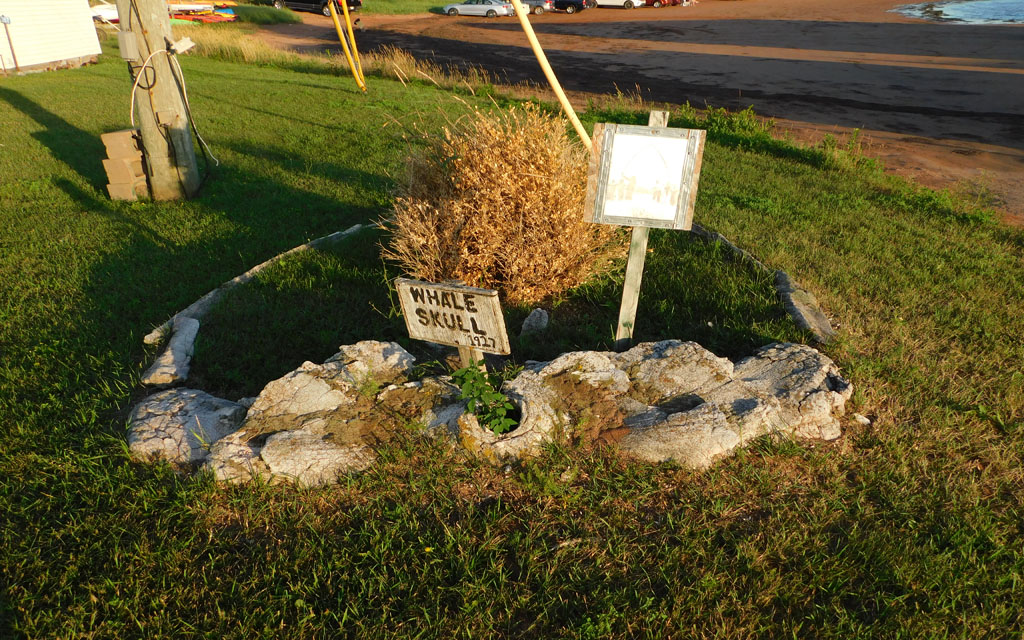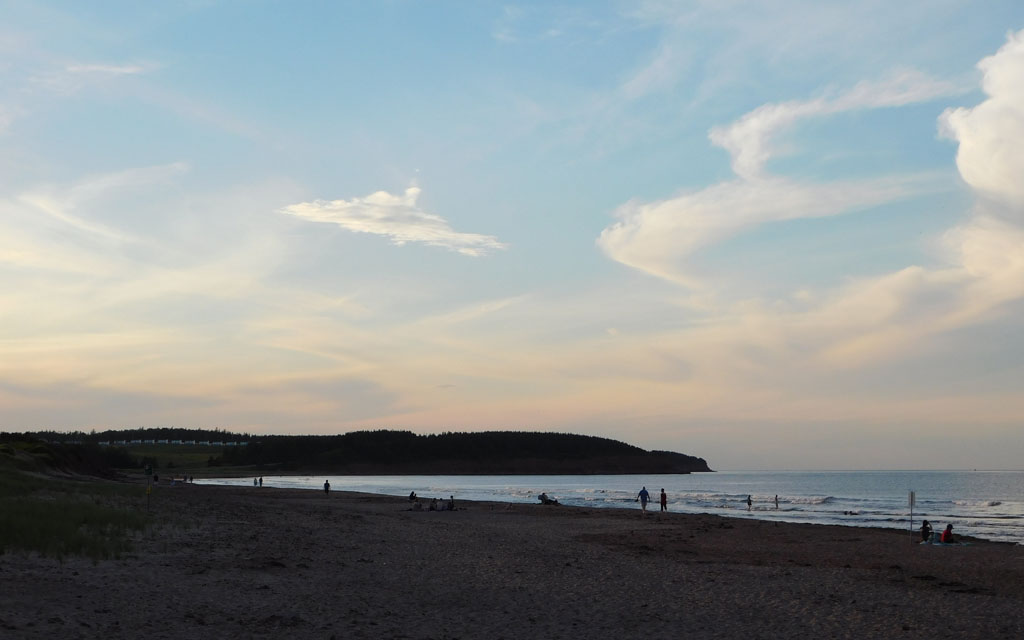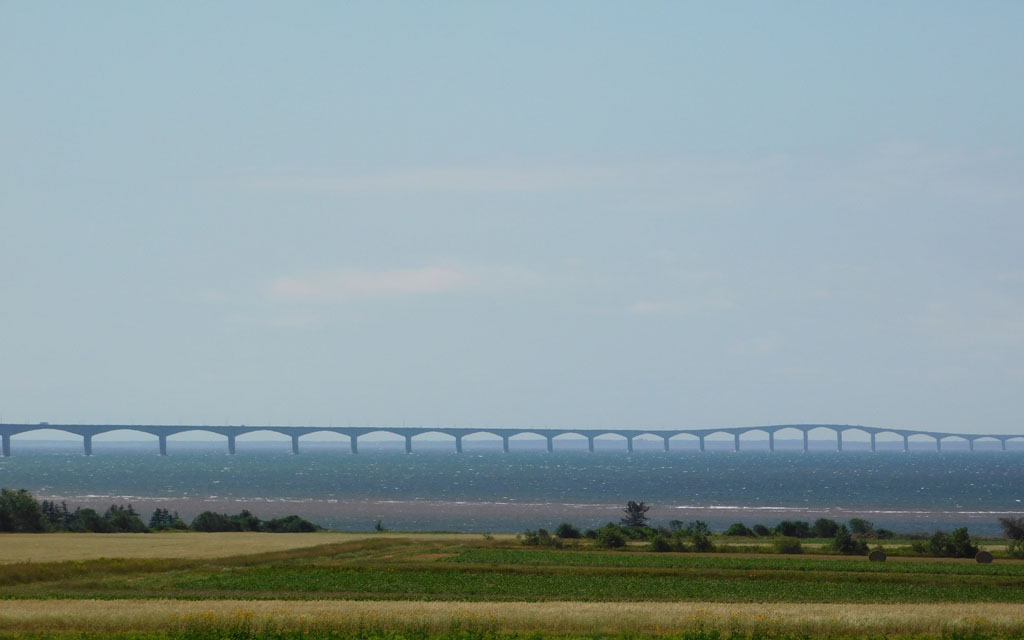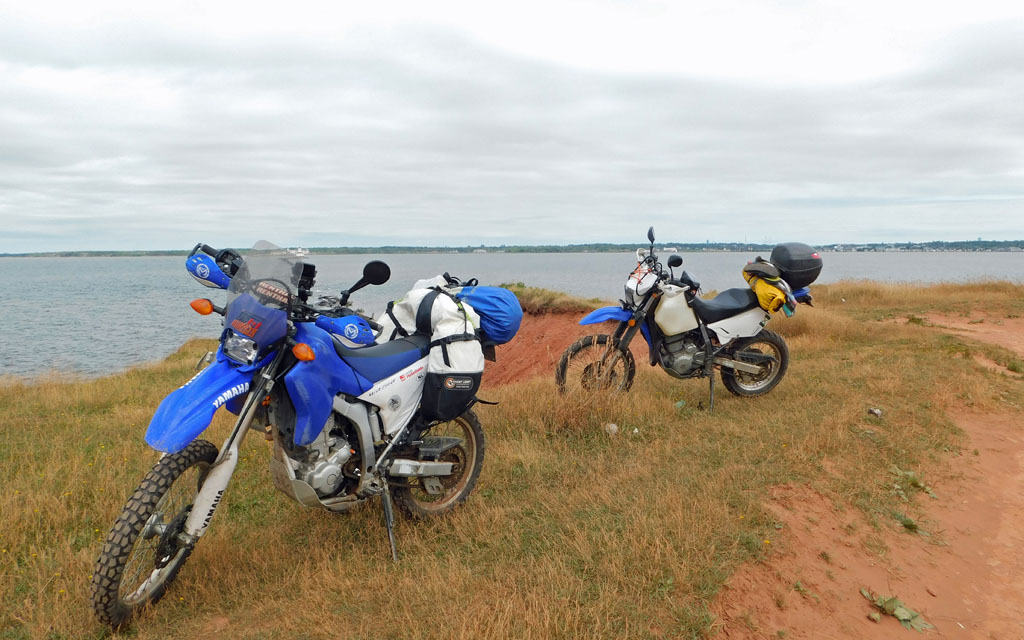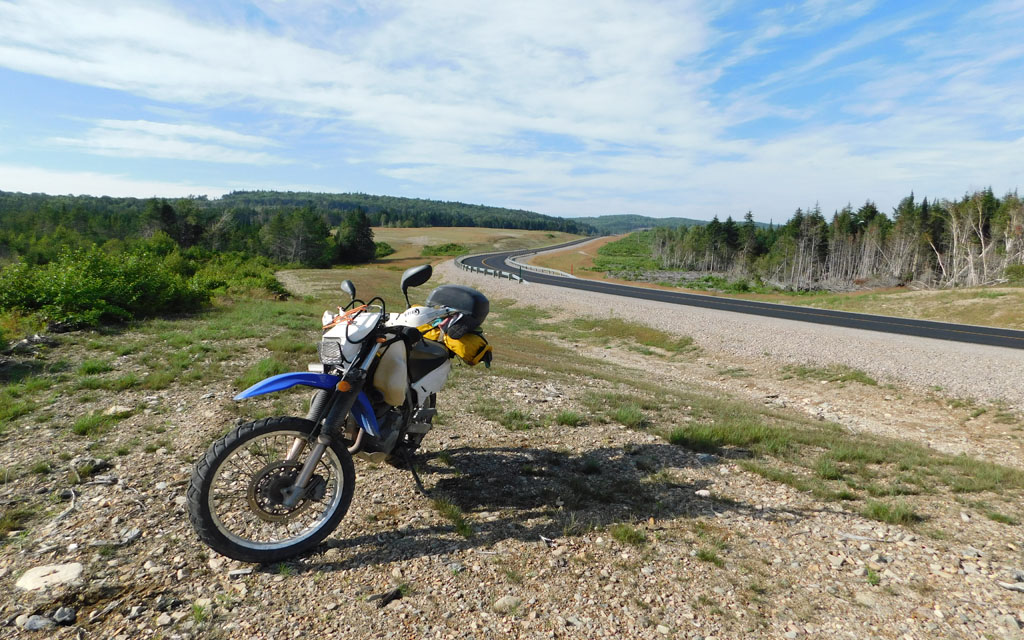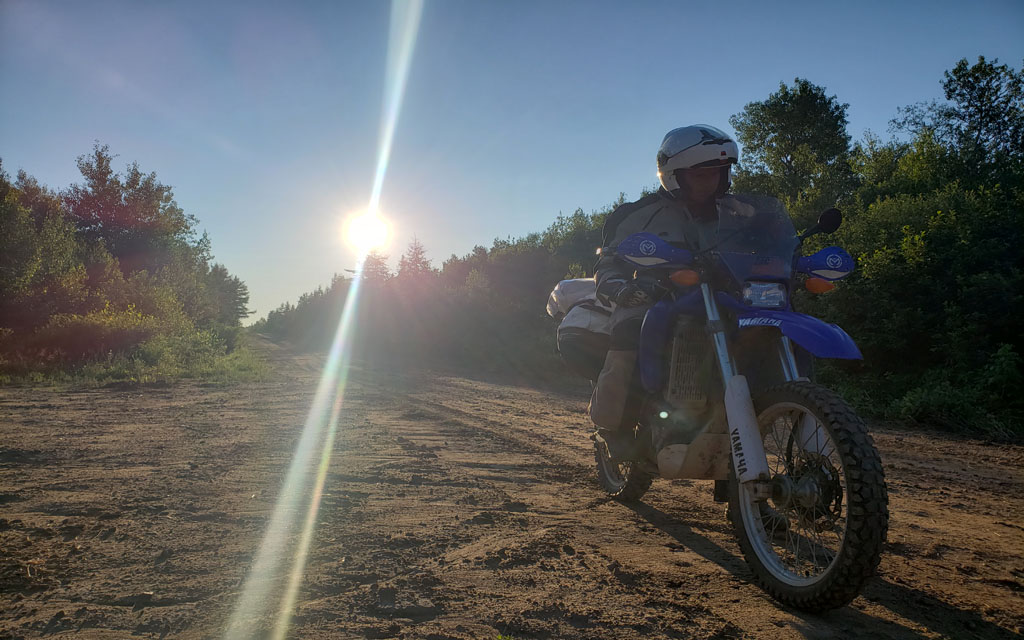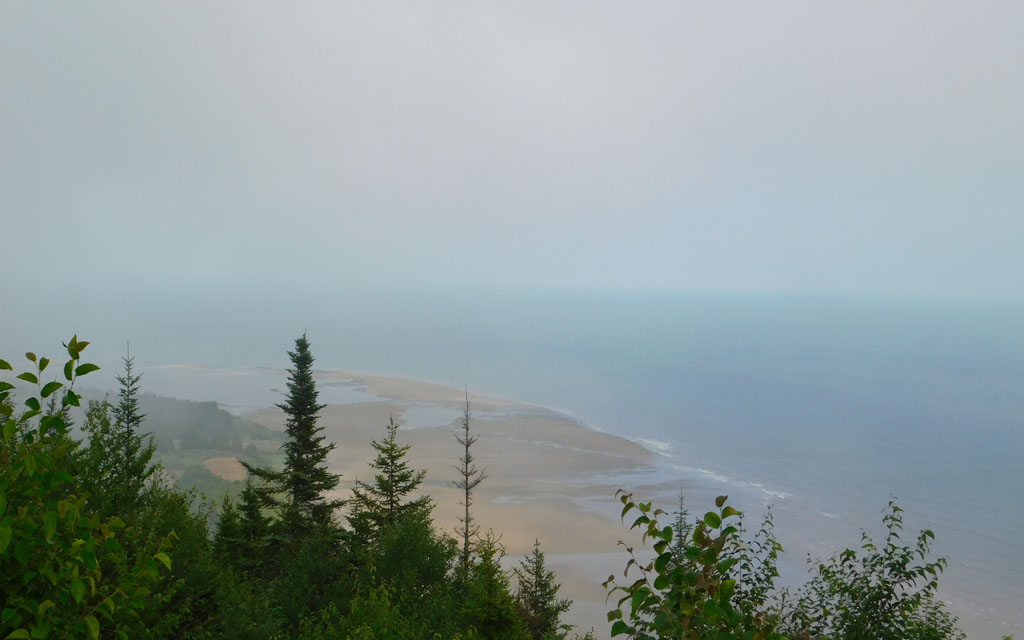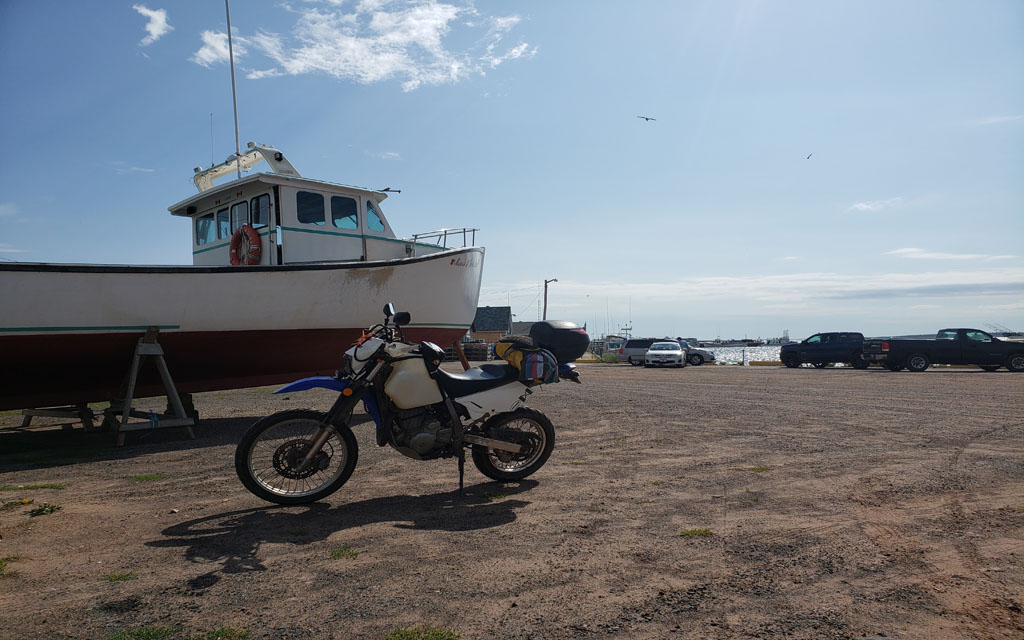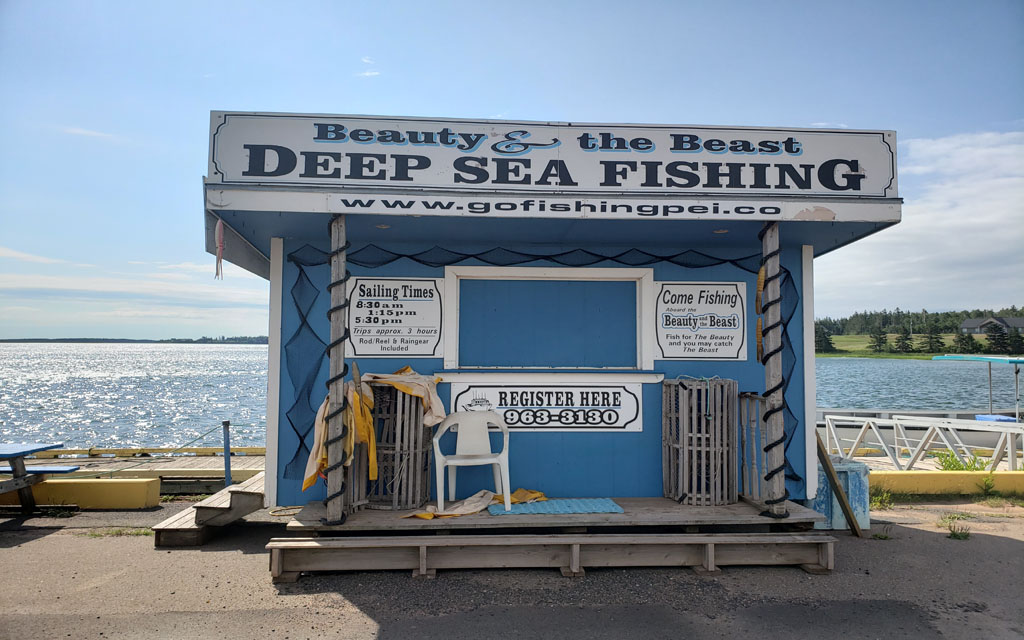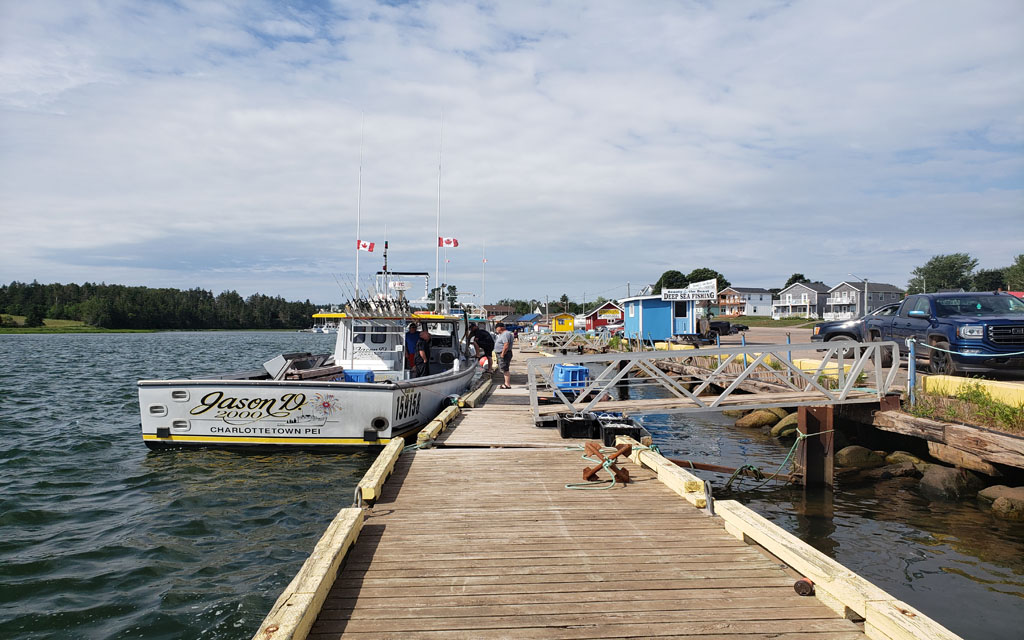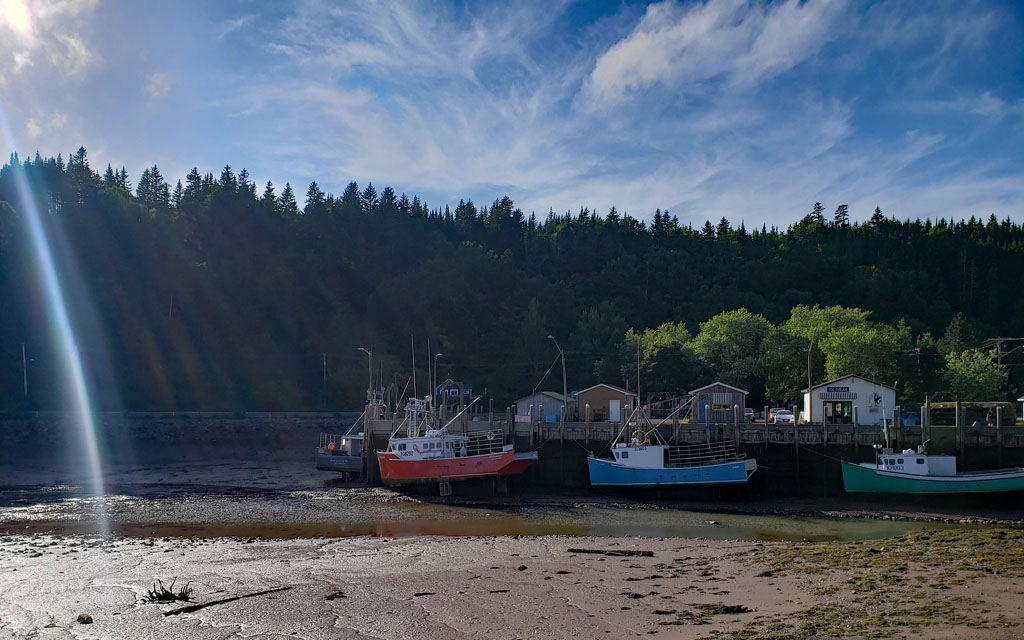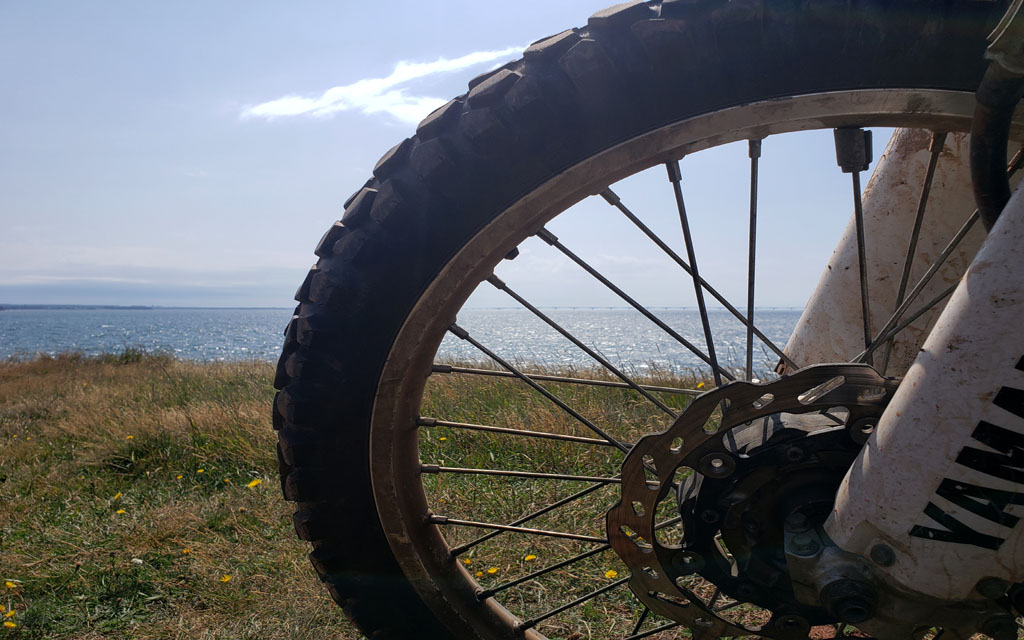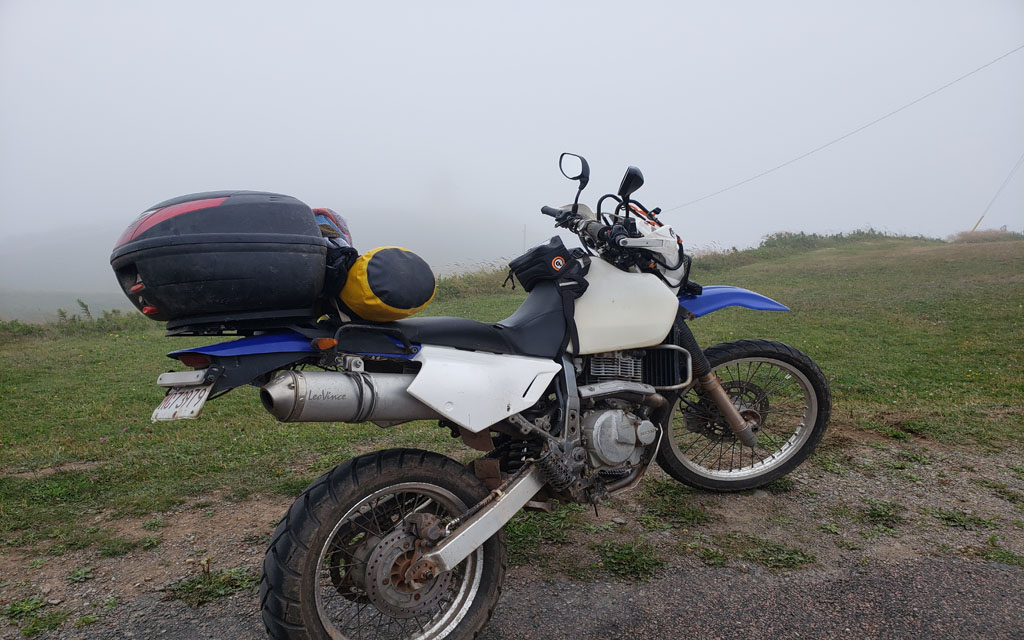Sometimes, you gotta get out of the house. At the start of August, my cousin Glen and I were in the same situation: a couple of 35-year-old dads, stuck at home base for five months. It was time to see what was going on in the rest of the world, and explore new roads, pandemic or no pandemic.
As always, life got in the way of the original plan. We both ended up unable to hit the road until after supper on the Saturday night of a long weekend. That left us just enough time for a run up familiar routes through the Kingston Peninsula, over to the Kennebecasis River, through Canaan Bog, finally hitting the Northumberland Strait with the sun setting behind us—the perfect relaxed ride to take the edge off weeks of isolation—a mix of secondary highways and gravel logging roads.
We rolled into my sister’s driveway with no incidents for the day, unless you count the creepy guy at a gas station outside Bouctouche, snapping pictures of us from his pickup truck window. I guess a pandemic affects different people in different ways.
I see lots of memes about how motorcycles are ideal for social distancing, but the next day we still felt crowded, heading down the Northumberland Strait. Grand-Digue, Shediac Bridge, Shediac, Beaubassin East—we were hemmed in by cars the whole time, and it wasn’t much fun for Glen, who was leading on my Yamaha WR250R; he’d borrowed my bike for the trip, with his Bee-Em-Trouble-You disabled by brake problems. He didn’t much care to ride the quarter-litre machine on the highway among the campers and transport trucks, so he took a quick look at Google Maps and found a side road to take us most of the way to Nova Scotia.
Before long, I wasn’t having much fun either. The paved farm road turned into a gravel track—no big deal for my DR650. Then it turned into an overgrown skidder trail. With the sun beating down and temperatures approaching the 30s, I began to question the wisdom of wearing a waxed-cotton Aerostich suit. Heatstroke was going to get me before COVID, at this rate.
However, every male motorcyclist fears the humiliation of having to back out and retrace your steps simply because the road got a bit tricky. Get two guys riding together, and neither will say it’s time to turn around! Solution: Have the Suzuki do its best bulldozer impression through the brush.
By the time we cleared that mess, we were both happy to boot it to Nova Scotia as quickly as possible, wondering what sort of border controls we’d encounter. A temperature check? A rectal probe? A Gestapo-like demand for our papers, please? I wondered if I should have brought some forged identity documents, just in case I needed to throw off The Man.
A couple of bored RCMP officers were watching cars inbound to New Brunswick, but nobody in Nova Scotia seemed too concerned about our arrival—there were no guards posted to keep track of us. As we rolled along the back roads towards Tatamagouche, there was plenty of traffic, plenty of people strolling around their cottage yards. Could Nova Scotia be as unconcerned about COVID-19 as New Brunswick is? After all, they’d been basically coronavirus-free for weeks, like us.
Nova Scotia may be chugging along with an extremely low infection rate, but when we stopped at the Robin’s in Tatamagouche, we saw Nova Scotia’s mask regulations enacted, and Glen wasn’t keen on that. The original plan was to ride the coast to the PEI ferry, but he didn’t want to spend an hour onboard wearing his COVID muzzle. Better to continue socially distancing on two wheels, he figured, so we made a circle of Chignecto County’s back roads all the way back to the NB border, where we headed to the Confederation Bridge to PEI.
A good sea breeze is an excellent way to break up a long, hot day of touring; maybe we could have used a ferry ride. But at least we discovered some new twisties, with no traffic. The trick, in Nova Scotia, is to avoid wineries and beaches. Hipsters and yuppies aren’t interested in A-to-B roads through the woods, if there’s no swimming or boozing at the end, so we were able to ride as fast as we wanted for most of the way back, with only one camper to pass. See, COVID’s good for something!
PEI’s border controls were more strict than Nova Scotia; we had to submit some paperwork, while the guard asked us about our PEI relatives. Glen and I passed both tests, and soon, we were in yet another zone of pandemic rules—no masks required here.
Here in PEI, things were closer to New Brunswick; the population seemed less concerned, and everywhere we stopped the bikes, people wanted to say hello. Some tourist operations were definitely concerned, with caution signs posted, but thankfully the stories we’d heard about verbal attacks on out-of-province visitors seemed no longer to be the case.
The roads themselves were great; PEI is always a fairly casual riding destination, but in late summer, the combination of greenery, the white ready-to-harvest crops, red dirt and blue ocean is unbeatable. Although Glen and I both grew up here, we managed to kinda- sorta get lost fairly quickly, but it was all good. Down a clay farm road, then reliable Route 13, and we were in North Rustico soon enough, camped out on family property. Looking out the windows at the beach, the same channels and sandbars we’d been swimming around for decades, the pandemic seemed a lifetime away.
Monday dawned, and it was time to take the long way home, to find some new country. The route out of Rustico through to the Confederation Bridge, then Moncton, was all familiar. PEI is a fun place to ride, and there are good corners, if you know where to look. Again, the pandemic was keeping the slow, gawking tourist caravans to a minimum, and that made the ride all the better. Normally, you have to wait until September for the Island’s roads to clear.
The breezes on the bridge put up a fight; the skies were setting up for a typhoon the next day and the wind pushed us all over our lane. By the time we got to Moncton, I still wanted to see the Fundy Trail Parkway, but it was foggy, and the heat and the wind had worn me down. Who needs COVID? Atlantic Canada’s weather is its own challenge.
Thankfully, Glen insisted on the long way home. It was the right choice; once we rounded the coast, down the Bay of Fundy, the fog and wind took the edge off the heat. A stop for coffee in Alma, and then we were through the national park, down a gravel road, and at the start of New Brunswick’s latest tourist attraction: the Fundy Trail Parkway, just opened this year.
The Parkway was built to show off the bay’s gorgeous scenery, and it’s also the best set of twisties in the province. Although it doesn’t have quite as much elevation change as the Cabot Trail, it’s a better ride, at least for now. There are no potholes, as it’s freshly paved, there are no houses, and thanks to the pandemic, very few tourists. Most locals see the bay all the time anyway, so they stay away. So we encountered almost no traffic, even though it was Monday of a long weekend. Uphill, downhill, around the switchback, and repeat: I really didn’t think I’d ever find this kind of riding in New Brunswick, and I’m gobsmacked that they’d open such a road, in today’s safety-conscious regime.
Of course, as professional engineer Glen pointed out, the speed limits are quite slow through here, and you’re not supposed to get your knee down. And, we didn’t. But we could have, and it would have been glorious.
We were almost home. A high-speed strafe through Gardner Creek, maybe the most underappreciated moto-road in Atlantic Canada, and we were done. Three days on the road in peak tourist season, only stuck behind one RV, no tickets, and friendly faces everywhere we stopped, whether or not they were wearing a mask. Turns out that a pandemic ride through the Maritimes’ COVID-free bubble was a perfect idea. Atlantic Canada’s friendliness is still shining through, and the roads are still great. I’m keen for the pandemic to be over, but honestly, part of me is loving the relaxed touring, and I’m going to do my best to get back out before the highways and byways are clogged with campers again.
